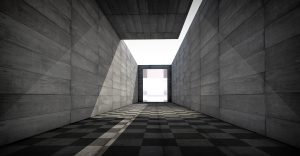In our journey to explore innovative and sustainable architecture across the globe, we have discovered many inspiring projects in developing countries that showcase a blend of traditional techniques and modern technology. These initiatives not only address environmental challenges but also uplift communities by creating resilient and eco-friendly structures. In this article, we delve into remarkable examples of sustainable architecture that are making a significant impact, from energy-efficient schools to eco-homes that harness local resources. Together, let’s uncover the ways in which developing regions are leading the charge towards a greener future. Have you ever wondered about some of the incredible sustainable architecture projects happening in developing countries? It’s amazing how innovative and environmentally friendly designs are transforming communities and landscapes in regions that often face significant challenges. Let’s dive into some of these groundbreaking projects that are leading the way toward a greener future.
The Importance of Sustainable Architecture
Sustainable architecture is more than just a buzzword; it’s a crucial aspect of modern construction that emphasizes eco-friendly designs, energy efficiency, and the use of sustainable materials. In developing countries, sustainable architecture can provide solutions to pressing issues like resource scarcity, climate change, and economic constraints.
Why Focus on Developing Countries?
Developing countries often face unique challenges such as limited resources, inadequate infrastructure, and high population growth. Sustainable architecture in these regions not only helps in reducing the environmental footprint but also promotes economic development and improves the quality of life for the inhabitants.
Innovative Sustainable Architecture Projects
Let’s explore some remarkable sustainable architecture projects in developing countries. Each of these projects showcases how creativity and ecological mindfulness can come together to create functional, beautiful, and sustainable structures.
The Makoko Floating School
In the waterlogged slum of Makoko in Lagos, Nigeria, the Makoko Floating School stands as a beacon of hope and innovation. Designed by Nigerian architect Kunle Adeyemi, this floating school addresses the perennial flooding issues faced by the community.
Key Features and Benefits:
| Feature | Benefits |
|---|---|
| Elevated on Floating Platform | Resilience against flooding |
| Use of Local Materials | Cost reduction and community involvement |
| Solar Panels and Rainwater Harvesting | Reduces dependency on external resources |
This project has not only provided a safe learning environment but has also inspired similar floating structures in other flood-prone areas.
Bangladesh’s Maleka Welfare Trust Hospital
The Maleka Welfare Trust Hospital, designed by Ar. Mubasshar Hussain, is a shining example of how sustainable architecture can meet critical healthcare needs. Located in rural Bangladesh, this hospital is designed considering both environmental impact and the wellbeing of patients.
Key Features and Benefits:
| Feature | Benefits |
|---|---|
| Natural Ventilation | Reduces need for air conditioning |
| Solar Water Heating System | Sustainable energy for hospital use |
| Brick Cavity Walls | Better insulation and reduced energy use |
Through simple yet effective design choices, this hospital serves the community sustainably.
The Ilima Primary School in the Democratic Republic of Congo
In the remote village of Ilima, the Ilima Primary School represents a collaborative effort between the community and architects from the African Wildlife Foundation (AWF). This school not only serves educational purposes but also acts as a community hub.
Key Features and Benefits:
| Feature | Benefits |
|---|---|
| Local Timber Construction | Sustainable use of local resources |
| Passive Cooling System | Comfortable indoor climate without energy use |
| Community Involvement | Provides local employment and skills development |
This school is an excellent example of how architectural projects can be integrated seamlessly into their cultural and environmental contexts.

Technologies and Materials in Sustainable Architecture
Innovation in technology and materials plays a critical role in enabling sustainable architecture. Let’s examine some of the essential technologies and materials used in these remarkable projects.
Renewable Energy Sources
Solar panels, wind turbines, and solar water heaters are increasingly used in sustainable architecture to reduce dependency on fossil fuels. Solar panels, for example, can power basic electrical needs and even contribute to local grids.
Sustainable Building Materials
The use of sustainable materials like bamboo, recycled plastics, rammed earth, and locally sourced timber has revolutionized construction in developing countries. These materials are often cheaper, locally available, and have lower environmental impacts.
Water Management Systems
Rainwater harvesting, greywater recycling, and efficient irrigation systems are vital components of sustainable architecture, especially in regions with water scarcity. These systems help in reducing water consumption and preserving this precious resource.
Community Involvement in Sustainable Architecture
Successful sustainable architecture projects often involve local communities in the planning, construction, and maintenance phases. This approach ensures the structures are culturally appropriate and supported by the community.
Benefits of Community Involvement
Economic Empowerment:
By hiring local labor and using local materials, projects can significantly reduce costs and provide economic opportunities for the community.
Cultural Relevance:
Involving the community ensures that the design respects and reflects local traditions and needs, increasing the likelihood of long-term success and acceptance.
Skills Development:
Training programs provided during construction can equip locals with valuable skills, which they can use to improve their living conditions or secure employment in the future.

Case Studies of Successful Projects
To fully appreciate the impact of sustainable architecture in developing countries, let’s delve into a few more detailed case studies.
The Earthquake-Resistant School in Nepal
Following the devastating 2015 earthquake, organizations like Design for Change Nepal and Kids of Kathmandu embarked on a mission to rebuild 50 schools using earthquake-resistant designs.
Key Features and Benefits:
| Feature | Benefits |
|---|---|
| Earthquake-Resistant Construction | Enhanced safety for children and staff |
| Green Building Practices | Lower environmental impact |
| Use of Local Resources | Cost-effective and supports local economy |
These schools not only provide safe learning spaces but also restore a sense of normalcy and hope for affected communities.
The Green School in Indonesia
Located in Bali, Indonesia, the Green School is renowned for its innovative approach to eco-friendly education. This school is built almost entirely from bamboo and other sustainable materials.
Key Features and Benefits:
| Feature | Benefits |
|---|---|
| Bamboo Construction | Fast-growing, renewable resource |
| Off-Grid Energy Systems | Use of solar and micro-hydro power |
| Organic Gardens | Provides food and educates on sustainability |
The Green School serves as an inspiration for educational institutions worldwide, demonstrating how schools can be both sustainable and beautiful.
The Empowerment Center in Kenya
Inaugurated by the Sanitation and Water Action Network (SWAN), the Empowerment Center in Kibera, Nairobi, focuses on both environment and education.
Key Features and Benefits:
| Feature | Benefits |
|---|---|
| Rainwater Harvesting | Sustainable water source |
| Solar Panels | Reduces electricity costs and dependency |
| Composting Toilets | Eco-friendly waste management |
This center provides a model for future eco-friendly community hubs in urban slums.
Challenges and Solutions in Sustainable Architecture
Sustainable architecture in developing countries is not without its challenges. However, innovative solutions often turn these obstacles into opportunities.
Financial Constraints
Building sustainable structures can be costly, especially when incorporating advanced technologies. But through international aid, government programs, and non-profit organizations, funds can be secured to offset costs.
Lack of Skilled Labor
Limited availability of skilled labor can be a significant challenge. Training programs that equip locals with necessary construction skills can help mitigate this problem.
Material Scarcity
Sourcing sustainable materials locally can sometimes be difficult. Innovations like using recycled materials or importing sustainable options can resolve these issues.

The Future of Sustainable Architecture
As awareness and education around sustainability grow, we can expect to see more innovative and impactful sustainable architecture projects emerge. Advances in technology and materials will make it easier and more cost-effective to build these structures.
Policy and Regulatory Support
Governments and international bodies can play crucial roles by implementing policies that promote sustainable building practices, offering incentives for green constructions, and ensuring that regulations support rather than hinder sustainable designs.
Increased Collaboration
Collaboration between architects, engineers, environmentalists, and communities will be key in driving forward sustainable architecture. Sharing knowledge and resources can lead to more innovative and effective solutions.
Technological Advancements
With the rapid advancement of technology, we can anticipate more efficient renewable energy systems, better materials for construction, and smart technologies that optimize building performance.
Conclusion
In conclusion, sustainable architecture in developing countries offers immense benefits, from environmental protection to economic empowerment and community development. By examining projects like the Makoko Floating School, the Maleka Welfare Trust Hospital, and the Ilima Primary School, we can see the transformational power of thoughtful, sustainable design.
As we move forward, it is crucial to support and invest in these initiatives. Sustainable architecture not only addresses the immediate needs of developing communities but also paves the way for a greener and more equitable future for all. So, let’s continue to champion and celebrate these amazing projects and the innovative minds behind them.



